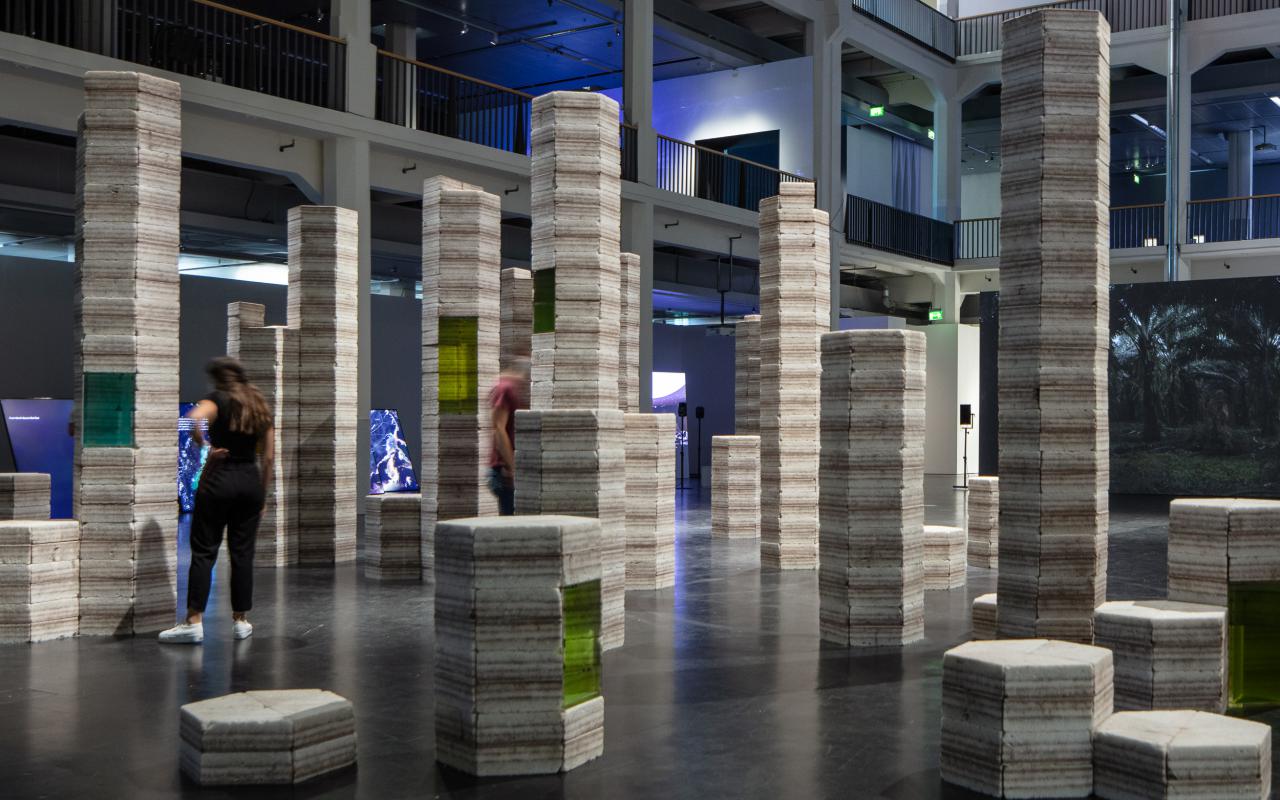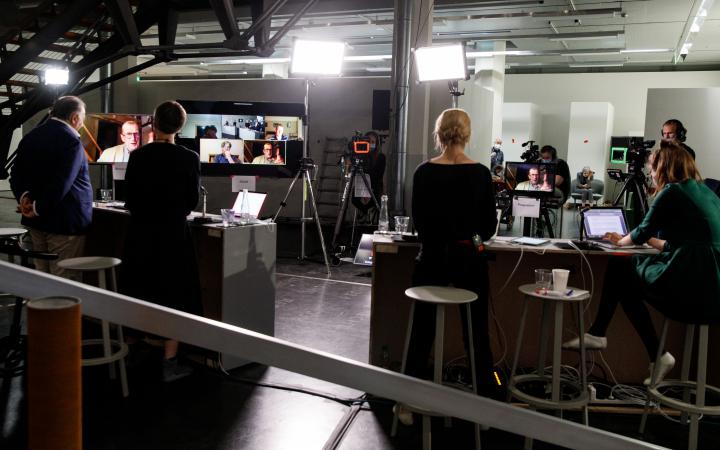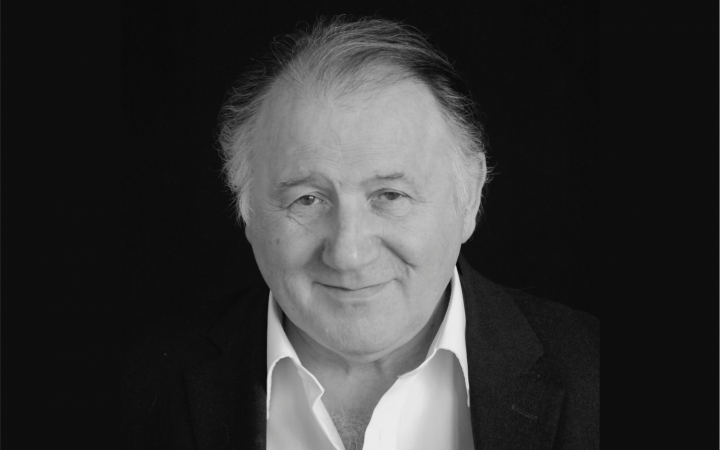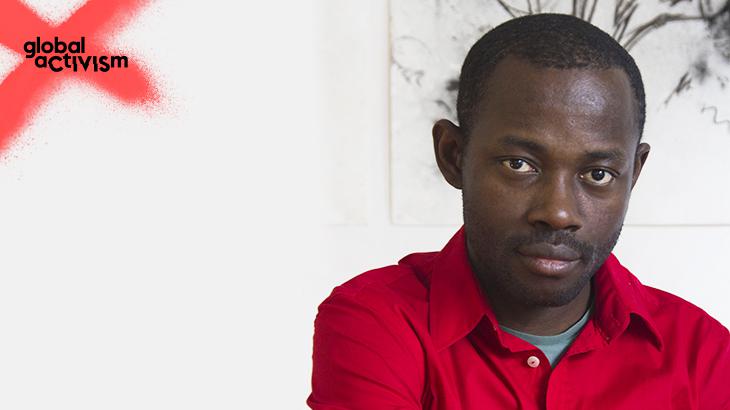
2014-02-27
Despite the deafening cries of those who have perished…
Over the last twenty years much has been said about the permeability of borders in order to promote the benefits of globalization. But very few people are aware that where Africa is concerned, the current borders are the result of an “arbitrary division of the African continent, traced with a ruler at a meeting in Berlin, when the European colonial powers established the borders, dividing our peoples into entities with hyphenated identities […] creating endless conflicts.”[1] We shall not discuss such conflicts here; they are tearing peoples apart and their echoes are relayed by the world’s media outlets every day. We shall also avoid talking about Western politicians who use border and immigration issues to advance their campaigns, or to maintain – and even exacerbate – the neuroses of racism and nationalism. Instead, we shall turn to art and aesthetics in an attempt to understand how an approach (that also serves as a social critique) can interrogate the aberration that is the “politico-criminal” concept of borders today.
“The crucial point of a thing is never that thing itself: the crucial point of art therefore cannot be art – that is the way art has developed.”[2] My work has developed over many years and encounters and can be seen as a journey between the finite and the infinite. Situated at the edge of intangibility, I do not hesitate to transgress established rules and logic, for my aim is to decode what is happening around me and open up new horizons. I am searching for the antidote that will heal the stigmata of those who, willingly or not, are now both from here and elsewhere, and have no home anywhere; those who, like me, are constantly looking for a place amid the racket of onomatopoeia, somewhere to deposit their disillusionment and reinvent themselves on different pages with other troubles. Sculpture and installation, painting, video, photography, screen printing, collage, and poetry constitute the palette I use to waymark time and level borders.
There is a kind of castration anxiety in the immigrant camps – linked to uncertainty about the future and the interminable waiting that creates a mixture of hope and fear – which pervades and burns you, yet leaves you exposed to the bitter cold induced by the feeling of impotence. This feeling, which many migrants had already experienced in their own country and had driven them to undertake their journey, justifies their decision to abandon themselves to fate. “Borders [throughout the world and especially in Africa] are an anathema that must be dissolved if we want [human beings to live in peace], if our continent is to develop, culturally, scientifically, and economically, as a single unit – and in a way that is organic.”[3]
My multimedia work is rooted in an approach that attempts, among other things, to rehumanize the notions of border and migration. My art does not lay claim to any geographical space, nor is it tied to any particular color or genre. My art is not primarily focused on the pain and suffering that afflicts the flesh and perverts the spirit. My art is drawn from the pulse of the here and now; it probes conflict-ridden reason for the “decisive moment” when the (ir)rational meeting of the spoken and unspoken occurs. My work is intended to reveal and vitalize something that overturns the “functional status quo” of our contemporary societies.
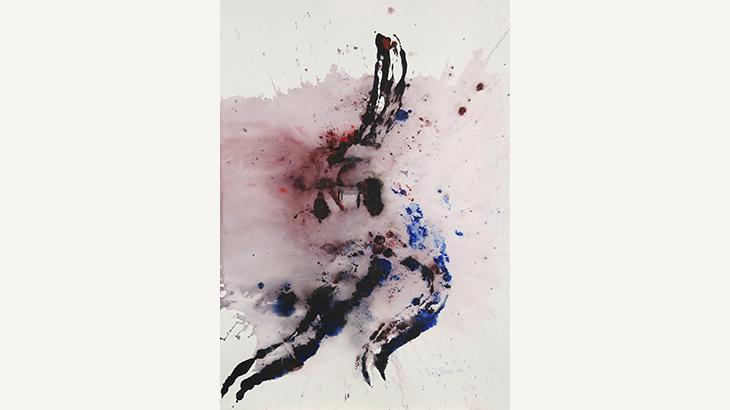
In aesthetic terms, most of the works I have created from these themes contain obviously critical elements. Next Week, for example, was a project I completed in Malta in 2010. I went there to visit the migrant camps, one of which, Hal Far Tent Village, had been set up as a temporary camp in 2007, when other centers, already overcrowded, could no longer cope with the increasing number of refugees.
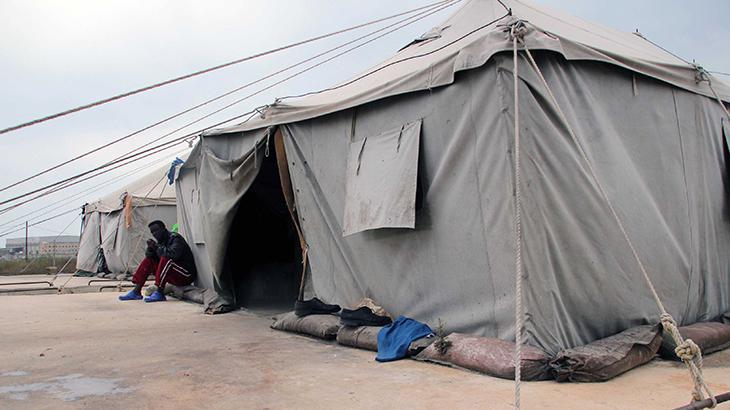
Since my arrival in Amsterdam in 2009, I wanted to take another look at the problem of immigration from a European perspective, from the point of view of the migrants’ ultimate objective. I am familiar with this scourge from a Cameroonian and African point of view; I know how dangerous it is for those who embark on the immigration trail. For many of them, it is often the only way (if not the last resort) of maintaining hope, of directing mind and body towards the goal of changing their lives.
If “art is not inclination but realization,” then what is the place of art’s realization when confronted with the reality of borders and immigrants?
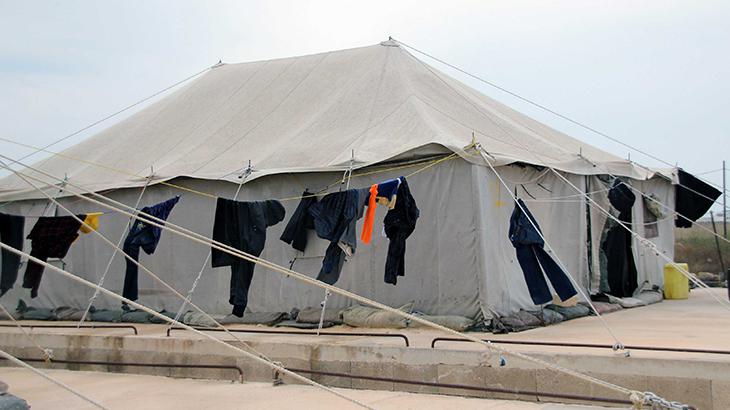
The Next Week project was inspired by certain significant occurrences, in particular the tragic events in Ceuta and Melilla in September 2005. We can all remember, given the media coverage of the facts (and their importance), the 800 illegal immigrants who attempted to put an end to their bat-like existence at Europe’s door on African soil. They rushed the electrified, barbed wire fences (7 meters high; 11 and 8 kilometers long) erected around Melilla and Ceuta, hoping to gain access to Spain’s enclaves in Morocco. Six people attempting to cross the fences were shot, but whether the shots came from the Moroccan or the Spanish side of this border “remains unclear.” The others were caught and taken to the desert between the Moroccan and Algerian border, where they were abandoned without food and water.
“Outraged” (as Stéphane Hessel put it in his celebrated Time for Outrage: Indignez-vous ![4]) by this event, I decided to undertake an artistic assessment that would clear my mind and also question attitudes to the issues surrounding migration. At that moment and on a personal level, living in Europe and returning to Cameroon became a militant act, which, I still hope, had an impact on the consciousness of those around me. During this entire period I developed a freedom of thought that still enables me to avoid the trap of superficial activism. For it has to be said that, when it comes to migration, many people will support the migrants’ cause simply through herd behavior or self-promotion: they are not prepared to sacrifice anything in order to defend it properly.
On a trip to Malta in 2010, I met the writer Daniel Rondeau, then serving as French ambassador to the island. The encounter was extremely frustrating. Mr. Rondeau had agreed to the meeting (knowing that I was a visual artist and that it was part of my project to talk to him on-camera about the living conditions of immigrants/asylum seekers), but would not let me film the interview on the pretext that, as French ambassador, it was inappropriate to talk openly about the subject. He was, however, prepared to talk about his “discreet” efforts on behalf of immigrants/asylum seekers, although he proved incapable of providing any details when confronted with my camera and tape recorder. The immigrants/asylum seekers he claimed to be assisting were not worth his ambassador’s job. On the other hand, his job did enable him to commandeer a helicopter and fly over the wreck-strewn waters navigated by the flimsy vessels of the “new boat people” as he called them, gathering material for texts intended for publication. This failed meeting simply confirmed what I had suspected before on arriving in Malta: an immigrant/asylum seeker is worth nothing. And there is no point in getting worked up over a French ambassador who chose to earn his salary by ensuring that the logic of diplomacy – which to this point failed to resolve the Israeli–Palestinian conflict – would not be compromised, despite the deafening cries of those who have perished, those who have been tortured, beaten, raped, or robbed by soldiers, police, and people smugglers in the desert, on the Libyan and Tunisian coasts, and even when they set foot on European soil, in Italy and Malta.
I still show some of the Next Week videos, photographs, and installations at galleries, biennials, contemporary arts festivals, and other exhibitions around the world. These works, as well as others I am planning about the same subject (relating to the latest tragic events in Melilla and Ceuta on September 17 and the Lampedusa disaster on October 3, 2013), have not changed the reality of immigration and still less that of the migrants. But my motivation and artistic commitment to highlighting this scourge have not diminished.
The contribution of art and artists to various areas of social life is no longer in doubt, but I still find it very difficult, as an artist and as an individual, to assess the impact of a committed artistic approach on a scourge such as immigration.
Further information on: www.global-activism.de
About the author
Guy Wouete lives and works in Antwerp and in Douala. Born in Douala in 1980, he studied art and multimedia at the Rijksakademie van Beeldende Kunsten in Amsterdam. Wouete creates his photographs following a conceptual artistic approach similar to that of a reporter, albeit leaving behind the reporter’s very obligation to refer to familiar images. He confronts the paradox that as an artist he materializes and represents things that can only be experienced as contradictions and as transitional situations. The photos from the series The dynamic of sunset (2009–2013) show passport size portraits, snapshots of someone who literally cannot be captured, who turns his gaze to somewhere outside the image frame, searching for a space that he himself wants to define or narrate. Wouete is a photographer who captures transitional moments of identity; also, he is the one who is being photographed and who evades being determined by the camera. This creates a free space that each individual can reinvent and redefine in social, cultural, and political terms.
___________________________
Notes
Translated from the French by Roger Leverdier.
[1] N. Farah, Frontière: une malédiction de notre continent, in: M. el Mocter, O. Poivre d’Arvor, S. Sidibé, M. Diawara, M. Foucher, M. Krifa, and L. Serani, (eds.), Rencontres de Bamako 09. Biennale africaine de la photographie, Culturesfrance éditions, Actes Sud, Paris, 2009, pp. 18–19, here p. 19, translated from the French by Roger Leverdier.
[2] François Soulages and Marc Tamisier, Photographie contemporaine & art contemporain (l’image & es image 4), Klincksieck, Paris, 2012, p. 13, translated from the French by Roger Leverdier.
[3] Farah, 2009, p. 19, translated from the French by Roger Leverdier.
[4] Stéphane Hessel, Time for Outrage: Indignez-vous!, trans. Marion Duvert, Hachette Book Group, New York, 2011.
